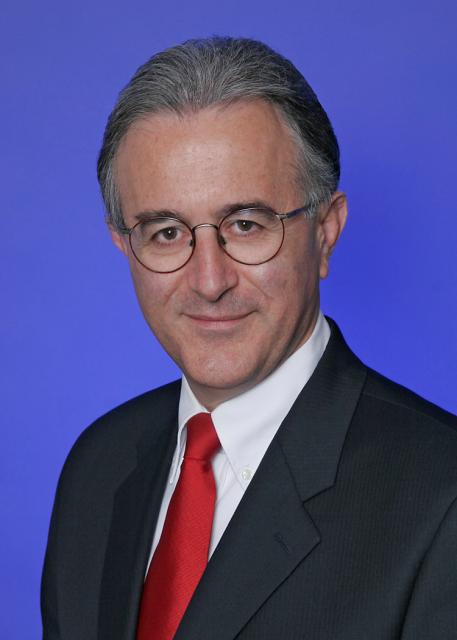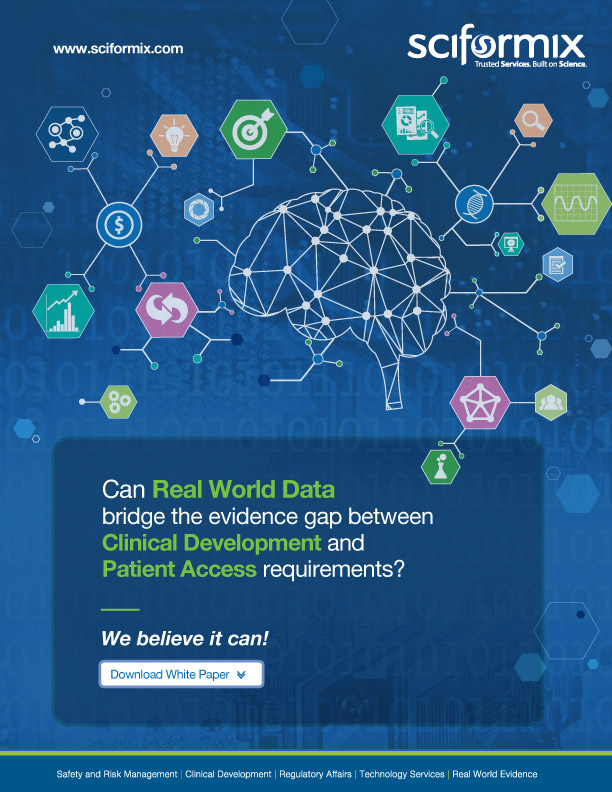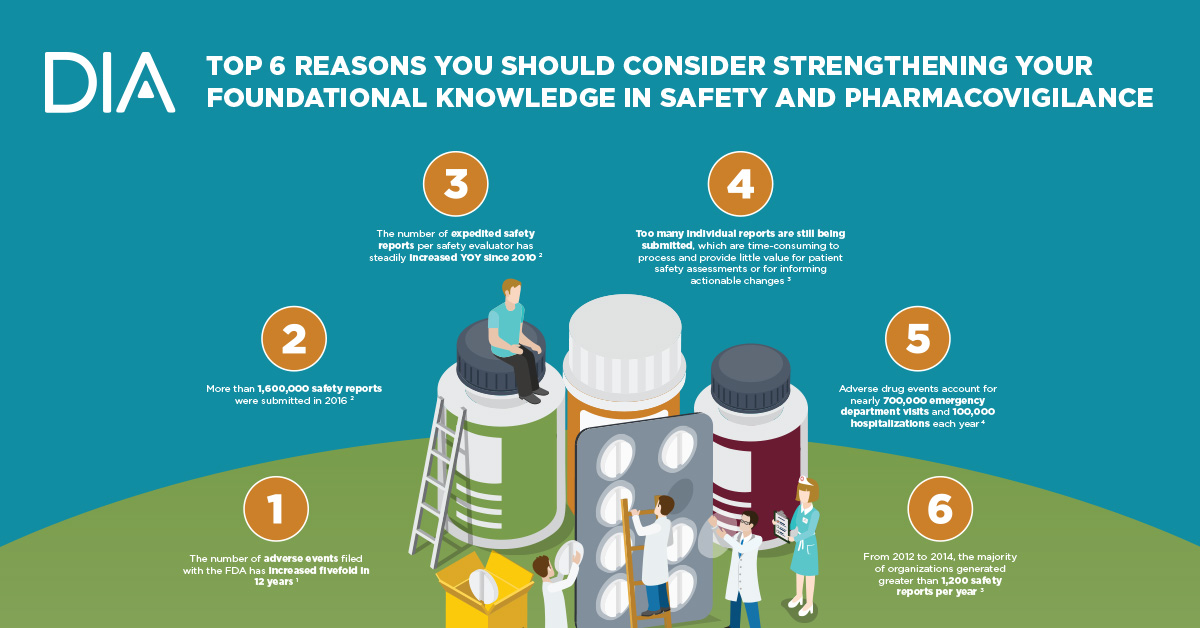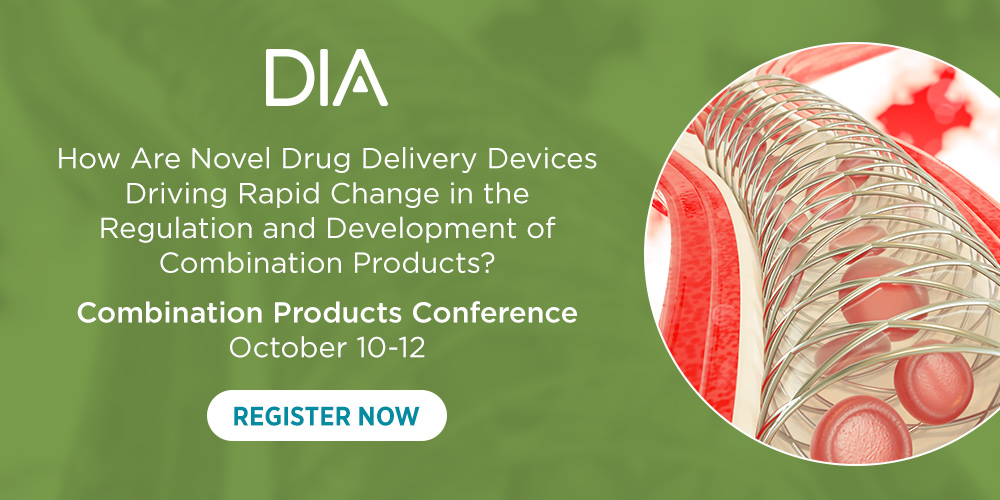May 2018 Global Forum
Table of Contents
Regulatory Review of Drugs and Devices in Canada
Takeways from the DIA Medical Affairs and Scientific Communication Forum
DIA 2018 GLOBAL ANNUAL MEETING
Patient Engagement Community Spotlight
Around the Globe
NPS MedicineWise celebrates 20 years and large healthcare budget savings
WHITE PAPERS
Executive Leadership
Subscribe
Love Global Forum‘s new online format? Subscribe today and never miss an issue.
Executive Leadership | Editor’s Message
To Our Readers
Setting A Higher Bar

Alberto Grignolo
Editor
Fellow of DIA
hose who came to DIA Europe 2018 in Basel last month expecting EMA Executive Director Guido Rasi to detail the logistics of the Agency’s move from London to Amsterdam in 2019 were in for a surprise.
Without dismissing the importance of the move and its impact on approximately 800 families of EMA employees, Director Rasi chose instead to emphasize what matters most: the uninterrupted productivity of the Agency (as both gatekeeper and enabler) with regard to the timely assessment of medicines for the benefit of patients. His views were echoed by others (national regulators, patient advocates, industry representatives) at the meeting, who ironically now regard Brexit as an opportunity for the 27 post-Brexit EU Member States to compensate for the anticipated “exit” of the influential British MHRA by hiring more local experts and assessors, thereby raising their own bar of regulatory expertise. The mood was cautiously optimistic as Brexit becomes a reality in March 2019.
Editorial Board
Content stream editors
Translational science
Gary Kelloff US National Institutes of Health
David Parkinson ESSA Pharma, Inc.
regulatory science
Yoshiaki Uyama Pharmaceuticals and Medical Devices Agency (PMDA)
Adora Ndu BioMarin Pharmaceutical, Inc.
Patient engagement
Deborah Collyar Patient Advocates In Research (PAIR)
Lode Dewulf Servier
Value & access
Edith Frénoy European Federation of Pharmaceutical Industries and Associations (EFPIA)
Sean Tunis Center for Medical Technology Policy (CMTP)
Editorial Staff
Alberto Grignolo, Editor PAREXEL International
Ranjini Prithviraj, Senior Managing Editor, Associate Director DIA Publications
Sandra Blumenrath, Science Writer DIA Publications
Chris M. Slawecki, Senior Digital Copyeditor DIA Publications
Regional Editors
AFRICA
David Mukanga Bill and Melinda Gates Foundation
ASEAN
Silke Vogel Duke-National University of Singapore Graduate Medical School
AUSTRALIA/NEW ZEALAND
Richard Day University of New South Wales, Medicine, St Vincent’s Hospital
CANADA
Judith Glennie JL Glennie Consulting, Inc.
Megan Bettle Health Canada
CENTRAL AND SOUTH AMERICA
Jaime Oliveira Bayer S/A
CHINA
Ling Su Shenyang Pharmaceutical University, Lilly Asia Ventures
EUROPE
John Lisman Lisman Legal Life Sciences
INDIA
J. Vijay Venkatraman Oviya MedSafe
JAPAN
Junichi Nishino Global Forum Japan Regional Editor
US
Ann Meeker-O’Connell Johnson & Johnson Quality and Compliance
DIA Membership
Bringing together stakeholders for the betterment of global health care.
Improving Timely Access to Medicines
Regulatory Review of Drugs and Devices in Canada
Megan Bettle
Director,
Regulatory Review of Drugs and Devices Biologics and
Genetic Therapies Directorate, Health Canada
oles and responsibilities in the Canadian healthcare system are shared between different levels of government.
The federal government’s role includes setting and administering national principles, while direct health and social service delivery for most citizens is primarily the role of the provinces and territories. In 2016, Canadian provincial, territorial, and federal health ministers committed to work together to improve the affordability, accessibility, and appropriate use of prescription drugs.
Jaime Oliveira
Head of Regulatory Policy and Intelligence LatAm,
Bayer S/A
Celeste Sánchez
Head of Editorial Committee,
Cuban Journal of Pharmacy,
Head of Policies and Regulatory Affairs, CECMED
he Certificate of Pharmaceutical Product (CPP) is the primary document of the World Health Organization’s (WHO) Certification Scheme on the quality of pharmaceutical products moving in international commerce.
Coming Rapidly of Age: Health Technology Assessment in China
Kun Zhao
Xue Li
Wudong Guo
Yue Xiao
The Initial Stage: 1980s to 2010
In the 1980s, Professor Chen Jie of Fudan University was the first person to bring the idea of HTA to China. Since then, he has been pushing for the development of HTA in China and raising awareness about HTA with health policy makers and health-related workers. With the expanding influence of HTA, the research unit at Fudan University was nominated as the ‘Key Laboratory’ by the Ministry of Health (MoH) in 2000. The lab conducted a series of academic HTA training workshops that introduced the HTA concept to professionals in China for the first time.
Improving Imaging Biomarkers in Oncology
Lawrence H. Schwartz
Tavis Allison
Binsheng Zhao
his month’s Translational Research discussion features imaging biomarkers, their essential role in predicting clinical trial outcomes, and new approaches which may accelerate drug development and protect patient safety.
This article summarizes progress from the initial imaging biomarkers developed to evaluate tumor shrinkage in response to cancer therapeutics, to the challenges posed by contemporary treatment paradigms which may produce new patterns of response. Current avenues toward meeting this challenge, including volumetrics, radiomics, kinetic modeling, and artificial intelligence, are reviewed. It focuses on computerized tomography (CT) because it is the workhorse of contemporary oncology, generating datasets required to develop novel approaches and creating immediate translational potential. However, the techniques discussed may enhance analysis of any quantitative imaging modality, including FDG-PET and/or MRI. The review of historical progress suggests factors that drive improvement independent of technology: increasing reproducibility, refining conceptual models, quantifying tumor phenotype, and learning from experience.
![]() Podcasts
Podcasts
Changing Research in China: From Generics to Innovators
![]() Podcasts
Podcasts
Has the Time for Big/Real World Data Finally Arrived?
Fishing for Insights
Takeaways from the DIA Medical Affairs and Scientific Communication Forum
Senior Director,
Global Medical Science Liaison,
Philips HealthTech
Director,
Medical Science Liaisons,
Americas,
Santen, Inc.
DIA Senior Scientist
hat exactly is a medical insight? How does one identify and collect meaningful medical insights, and apply them to the healthcare product business?
And once one has gathered these insights, how does one continue the engagement with the thought leader or healthcare professional beyond the initial interaction? These questions were addressed at the Fishing for Insights and Extending the Engagement Beyond the Congress Workshop at the 2018 DIA Medical Affairs and Scientific Communication (MASC) Forum. The purpose of this workshop was twofold: 1) to share perspectives on engagement from those in the pharmaceutical, medical device, and professional association fields; and 2) to explore strategies and tactics to extend the engagement beyond the conference venue.
Key Takeaways
- Traditional insight gathering and engagement approaches can be supplemented with other methods, such as simple targeted surveys
- Engagement tactics that are mutually beneficial to both parties lead to stronger relationships
- When discussing insight generation and engagement, it is important to consider collaboration with internal stakeholders.
DIA 2018 Global Annual Meeting
Highlighting True Patient Engagement at the DIA 2018 Global Annual Meeting
Deborah Collyar
Founder and President,
Patient Advocates In Research (PAIR)
Steve Roberds
Chief Scientific Officer,
Tuberous Sclerosis Alliance
Ronnie Todaro
Senior Vice President and Chief Operating Officer,
Parkinson’s Foundation
ach year, DIA is assisted by hundreds of volunteers to plan and organize the DIA Global Annual Meeting, including members of the Annual Meeting Planning Committee (AMPC). The AMPC considers and helps develop topics for each track featured in the Meeting.
As some of the newly appointed Patient Engagement (PE) Track members, we are sharing our thoughts about what DIA and its members can learn about Patient Engagement at the 2018 DIA Annual Meeting.
DIA 2018 Global Annual Meeting
Patients Are No Longer Just Participants, They Are Partners
Patient Engagement Community Spotlight
Lisa Palladino Kim
Director of Capstone and Lecturer,
Rutgers School of Health Professions
Laura Kolaczhowski
Lead Patient Representative,
iConquerMS
Harsha Karur Rajasimha
Senior Director,
Life Sciences for NTT DATA Services
Helen Kellar-Wood
Immunoscience Lead,
Diversity and Patient Engagement, Bristol-Myers Squibb
urrent digitization of patient health information via electronic medical records, data from clinical genomics, biomedical imaging, lifestyle and activity monitoring using wearables, social media, patient registries, emerging technologies of data analytics, and blockchain opens new opportunities to engage patients as important stakeholders in the biopharmaceutical drug discovery and development process.
Traditionally, the drug discovery and development process has engaged patients as participants, but not as partners. With its mix of advocates and industry members DIA’s Patient Engagement Community (PEC) offers thought leadership and practical experience in integrating patients as full partners.
![]() Podcasts
Podcasts
DIA 2018 Co-Chair: Patient Activists Are “Our Best Friends”
![]() Podcasts
Podcasts
Running Away from Addiction Has Caught Up with US
White Paper
White Paper
Around The Globe
PMDA Puts Regulatory Approval on a Fast Track
Takao Yamori
Executive Director,
Pharmaceuticals and Medical Devices Agency, Japan
Sandra Blumenrath
DIA Science Writer
n recent years, Japan’s Pharmaceuticals and Medical Devices Agency (PMDA) has taken several steps towards innovating the regulatory process to deliver safer and more effective medicines and devices to patients with life-threatening conditions. Restructuring efforts have targeted the very core of the organization, seeking to improve PMDA’s performance efficiency throughout the regulatory review process.
To that end, PMDA has implemented various innovative, fast-track regulatory initiatives as part of its current 5-year Mid-Term Plan, including the sakigake Designation System and the most recent Conditional Early Approval System.
The result: PMDA scored a major success with the speedy approval of a “titanium bridge” (NPC-17) for type II thyroplasty – a device whose approval would have remained in limbo considerably longer without the sakigake fast-track review system. With the recent regulatory initiatives, PMDA has met the major targets of its Mid-Term Plan, achieving shorter approval times, greater review service quality, and enhanced safety measures. By prioritizing innovative products and companies that have not filed for approval elsewhere, the ministry of health hopes to provide such products earlier to patients.
Around The Globe
Japan’s New Clinical Research Act
Haruko Yamamoto
Center for Advancing Clinical and Translational Sciences,
National Cerebral and Cardiovascular Center
or the first time in history, Japan’s new Clinical Research Act, enforced in April 2018, legally defines the term “clinical research” as clinical trials designed to establish the efficacy and/or safety of drugs, medical devices, or cellular and tissue-based products.
However, the new Act may add another bureaucratic step for researchers seeking to advance clinical trials.
The definition excludes clinical trials related to the approval of new medical products that are defined and conducted in accordance with the provisions of the Pharmaceuticals and Medical Devices Act (“Chiken”). The new legal definition is not in line with the global consensus on clinical research, which covers a wider area, including observational studies. Therefore, it might become necessary to refer to clinical research defined by this act as “clinical research-in-law” to distinguish it from our conventional understanding of clinical research.
Around The Globe
Delivering ‘Quality Use of Medicines’ to Australia
NPS MedicineWise celebrates 20 years and large healthcare budget savings
Richard Day
Professor of Clinical Pharmacology,
UNSW and St. Vincent’s Hospital, Sydney
his year, a remarkable national organization, NPS MedicineWise (previously known as the National Prescribing Service) celebrates its first 20 years of service to the Australian people.
The NPS was founded in 1998 by the Australian Government to promote Quality Use of Medicines (QUM), the centerpiece of Australia’s National Medicines Policy. The underlying premise of the QUM policy is that better outcomes from medicines use can only be achieved by inducing a ‘behaviour change’ of, and ‘partnerships’ between, patients, families, and caregivers along with health care practitioners and their organisations, the pharmaceutical industry, and governments. Critical to the QUM strategy is that the patient should occupy the centre, and crucially, the Consumers Health Forum (the umbrella body for consumer health organisations in Australia) was instrumental in driving the government and stakeholders towards the National Medicines Policy, the QUM national strategy (1992), and ultimately NPS MedicineWise.
Listen & Learn
Have You Heard? DIA Podcasts
DIA podcasts offer listeners a unique opportunity to hear from leaders in healthcare product development, regulation, and patient advocacy. Subscribe to our Driving Insights to Action Podbean podcast channel to stay connected!


Thanks for reading our May 2018 Issue!









